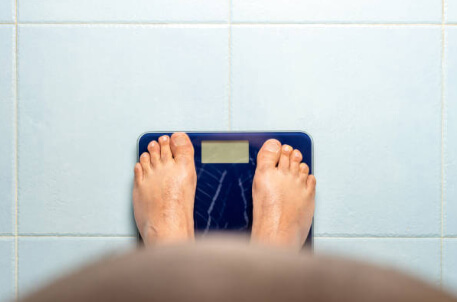What affects the average human's lifespan and the technology helping us to live longer?
The secret to living a long life is to know how to defeat illnesses. Improved sanitation and education, affordable housing, and advancements in medical therapies have increased human life expectancy on average. Anyone born in the U.S. in 2017 is predicted to be 78.6 years old.
The recent increases in life expectancy have resulted from changes in society.
Today's technology enables us to optimize our health, increasing our life expectancy.
Today, we can access diagnostic tools like DNA sequencing and portable health monitoring devices. Diagnostic tools help make decisions for every person. Food choices, the effect of your exercise routine, sleep patterns, and risk of developing illnesses can be monitored using technology.
In the short term, these enhanced diagnostic tools help develop proactive therapies to avoid disease. In the longer term, technology like CRISPR-based gene editing treatments has been developed to eradicate the disease.
Disease, The Barrier to Long Life.
What is the greatest obstacle to a long and healthy lifestyle? It is premature death due to illness. Understanding what causes death provides insight into the best ways to live a longer, healthier life.
The three most frequent deaths in the U.S., according to the CDC in 2017:
- Heart Disease
- Cancer
- Accidental Death
The CDC study indicates that the three most common factors that cause death are responsible for almost 75% of the U.S. mortality rates. Cancer and heart disease account for nearly half of all deaths in women and men, and accidental deaths account for approximately 25%.
The risk of accidental death is most common in younger populations, and older people (65 years and older) tend to suffer from internal diseases like heart disease.
Let us assume that most people are cautious, and the possibility of accidental death is partly due to chance—heart Cancer and heart disease as the most significant factors that prevent longevity.
The best way to ensure an average lifespan is to develop a plan focusing on the two illnesses. Human longevity is a method that focuses on taking care of your body to ensure that you can live as long as you want. The objective is to live for long enough that medical technology advances until treatments for illnesses have more effectiveness. Therefore, extending the life span even further.
Diagnostic Tools For Longevity
A strategy to build longevity begins with diagnostic tests. It's about gaining a basic knowledge of what you're genetically predisposed to, and developing an understanding of how your body is likely to react to treatments, the foods you eat, and the amount you exercise and rest.
Diagnostic technology has progressed in terms of value and price.
Genomic Sequencing
DNA sequencing is an excellent example of a breakthrough technology that can help combat spread. By comparing a person's DNA traits to a range of human DNA sequences, you can determine which diseases a person is most likely to have.
Genetic sequencing can determine if someone is susceptible to certain types of Cancer, like BRCA1 and BRCA2 gene mutations. The discovery of genetic mutations allows for preventative measures to prevent medical conditions that can lead to death. This is especially true for BRCA1 and BRCA2 women with this congenital disability who take double mastectomy to prevent breast Cancer. It is a very likely outcome for those with this genetic mutation.
You can also make personalized workout routines, diets, and overall health plans based on sequencing your genes. Companies like Human Longevity Inc offer consultation with a doctor and sequencing to create customized wellness plans.
Wearables, Data Tracking, and Dietary Science
There is a way to enhance genetic sequencing data using IoT technology. It is possible to improve your daily health by collecting your personal health information.
- Fitness Trackers
- Heart Rate Monitors
- Sleep Trackers
- Digital Food Journals
The world has moved beyond one-size-fits-all approaches to nutrition in the digital age. Sequencing DNA and monitoring health outcomes in real-time allows us to develop customized diets.
It is clear that what you eat, whether you exercise or not, and how you sleep affect your longevity. Today, we have the technology to personally measure and improve to reduce the risk of heart disease.
Keys Takeaways
We know that the most significant hurdles people face during their long lives are illnesses. By using advanced diagnostics and technologies, we can develop effective strategies to address the weaknesses of our people. As technology advances, it becomes more convenient and more affordable for everyone.
Choices about how we care for ourselves early in life will influence how we can live longer. How you eat, what you do, how you exercise and manage your relationships, and the overall quality of your mental health can significantly impact the length of your life.
There isn't a way to slow down the aging process.
As a result, we have become more proficient in genetic sequencing, neural network mapping, network interfacing, and a good grasp of nutrition science. Perhaps, soon, immortality is a possibility.
While we sit, here are a couple of articles that cover near-term subjects to keep an eye on:
- Gene Editing - is a technology that works on writing genetic mutations into our DNA to cure and prevent diseases.
- Alzheimer's Drug - using drugs to attack the microbiome. These treatments help patients maintain their cognitive functions and are currently developing.
- Metabolic Diseases - scientists study hibernating mammals to learn more about the factors that lead to obesity and certain metabolic disorders.
- The collection of personal information about medical data as part of personalized health plans is crucial, but there are negative consequences to capturing that information.








